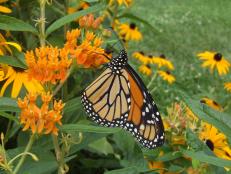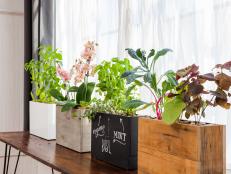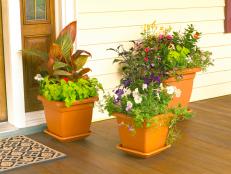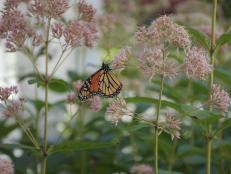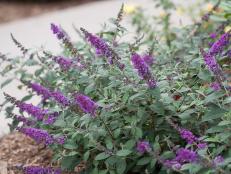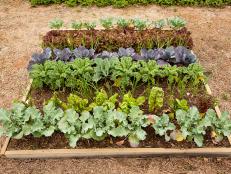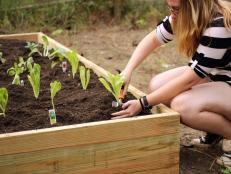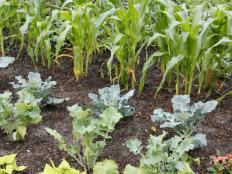How to Create a Butterfly Garden
Learn how to add a butterfly garden to your yard and make it a destination for these beauties.
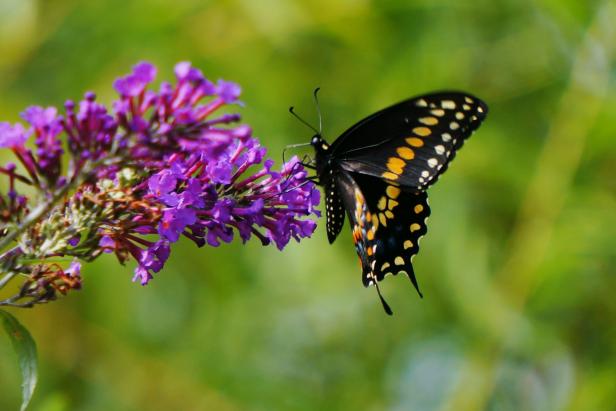
Getty Images/Vinod Kumar
Most butterflies can’t resist blossoms in shades of pink, red, purple, and yellow.
Materials
- butterfly-attracting flowers
- large, flat rocks
- water source
- one or more trees or shrubs
Watching butterflies bask in the sun or flit from flower to flower has to be one of the great pleasures of gardening. Follow these steps for planting a butterfly garden and you’ll be rewarded with fluttering color — along with drifts of flowers.
Step 1: Select Site for Butterfly Garden
Provide Shelter
A variety of broad-leafed trees and shrubs will provide cover from wind, rain and predators.
Give Them Sun
Locate your butterfly garden in a sunny site; if you can't find a protected spot, plant a windbreak of mid-sized cultivars of dense conifers like spruce, juniper or cypress.
Step 2: Remember the Rocks
Invite Butterflies to Sunbathe
As cold-blooded insects, butterflies like to seek spots to bask in the sun and warm their wings for flight.
Create a few perches out of the wind; chances are you'll also see them resting on a sunny rock or on top of a fence post.
Step 3: Provide Water
Create a Butterfly Puddle
Put a mixture of sand and soil in a plant saucer or a shallow bowl and add enough water to saturate the mixture thoroughly, but not so much that there's standing water. Butterflies like to rest on wet sand or soil and absorb moisture and minerals from it. If the "drinking station" dries out too fast in your climate, sink a bucket filled with a wet mixture of soil and sand into the ground.
Surround your puddle with a ring of flat stones that can absorb sunlight and provide a place for butterflies to sun. Try to site your stones where they’ll absorb morning sunlight.
Step 4: Add Plants that Attract Butterflies
Choose a wide range of flowering plants that differ in color, type of flower and bloom time to welcome multiple butterfly species and give them plenty of options.
26 Butterfly Garden Flowers 26 Photos
These vibrant flowers and plants provide nectar for butterflies and create a bold border for your yard.
The best butterfly gardens welcome not only spotlight-stealing adults with their colorful wings, but also encourage their humble beginnings: caterpillars. By including plants that nourish adult butterflies along with their caterpillar precursors, your butterfly garden design can create a place where nature rules.
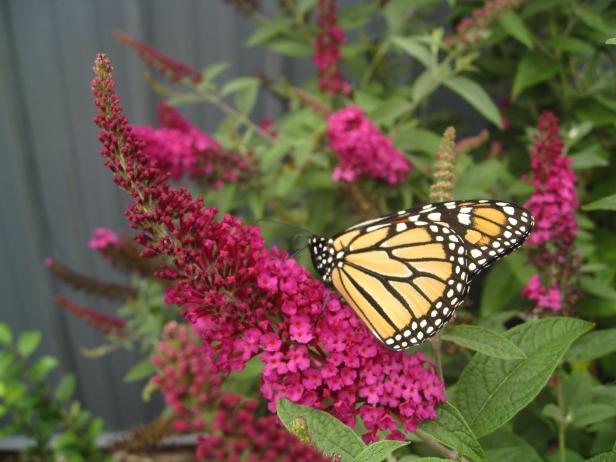
The fast-growing butterfy bush are easy-care plants that grow up to 12 feet tall. Butterflies find them irresistible.
Butterflies feed on tubular flowers and they especially love those with "landing strips." Yarrow, stonecrop, coneflower, verbena, phlox, butterfly bush, butterfly weed (Asclepias), bee balm, cardinal flower (Lobelia), coreopsis, black-eyed Susan, Joe Pye weed, and various asters and sedums can keep your garden in butterfly blooms throughout the season.
Remember the Babies
Depending on the species, butterflies need particular host plants for laying eggs. You may think of plants like milkweed, wild mustard and nettles as weeds, but for some butterfly species, that's food for the young caterpillars.
Caterpillars feed on specific plants, so do some research to stock your garden with plants that caterpillars native to your region find tasty. The one thing caterpillars consistently do is munch, munch, munch. It’s a good idea to tuck plants destined to satisfy voracious caterpillar appetites into a less visible portion of your butterfly garden design. Place this section where you can easily visit and observe caterpillars, but not front and center where chewed — and even missing — leaves will detract from the garden’s beauty.
Plant Annuals
Plan your garden to have non-stop color to keep the butterflies coming. Most butterfly garden designs incorporate quite a few annuals to help achieve a steady flower show. Good annual candidates for a butterfly garden include creeping zinnia (Sanvitalia procumbens), marigold (Tagetes spp.), mealycup sage (Salvia farinacea), Mexican sunflower (Tithonia rotundifolia) and pentas (Pentas lanceolata).
Arrange bloomers in drifts so that near-sighted butterflies can easily spot the large swaths of color. Focus on flowers that feature bright tones in your butterfly garden design. Most butterflies can't resist blossoms in shades of pink, red, purple and yellow. These winged wonders also have a strong sense of smell and are lured by fragrant flowers.
Remove spent blossoms in your butterfly garden faithfully to coax more flower buds to form.
Step 5: Avoid Using Pesticides
Treat your landscape like the miniature ecosystem that it is, banning the use of insecticides and herbicides. With a diversity of plant material, you're not likely to attract large numbers of plant pests, and you'll also be protecting natural predators.







